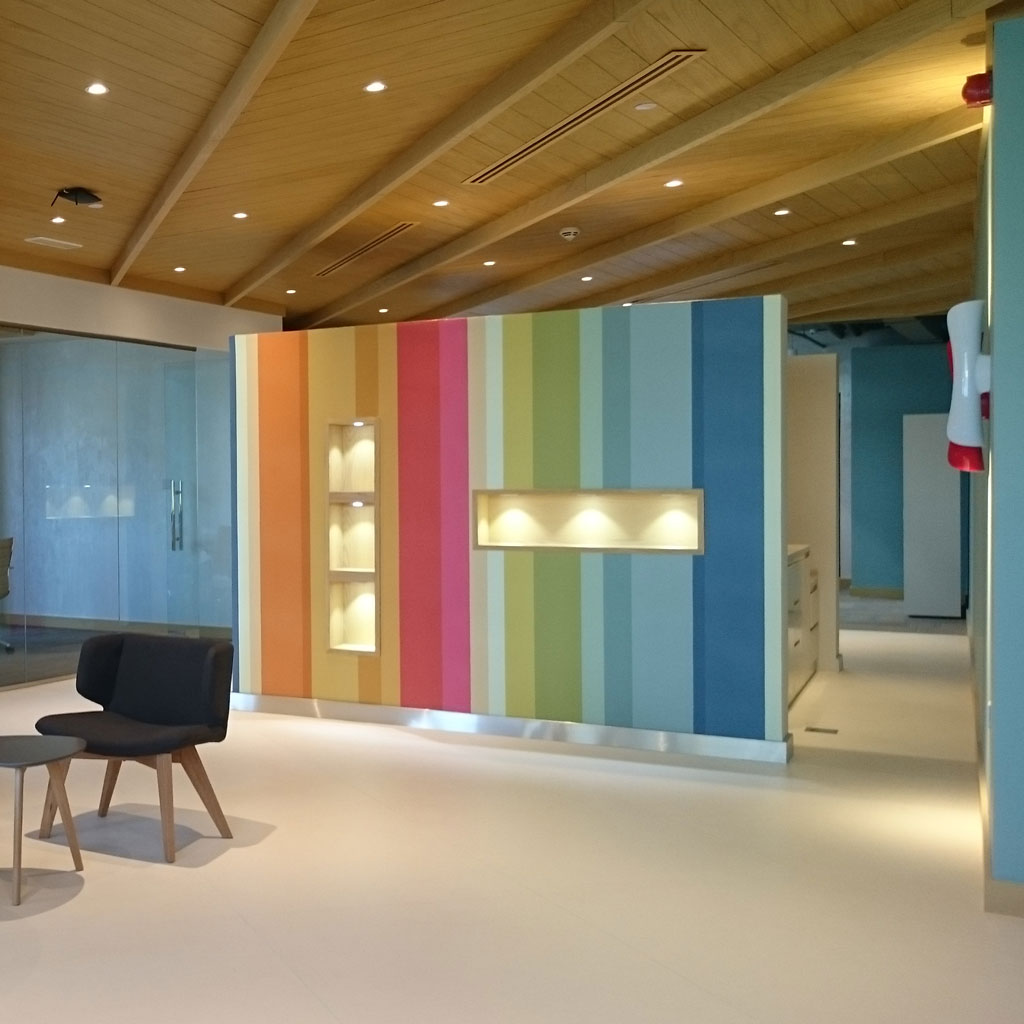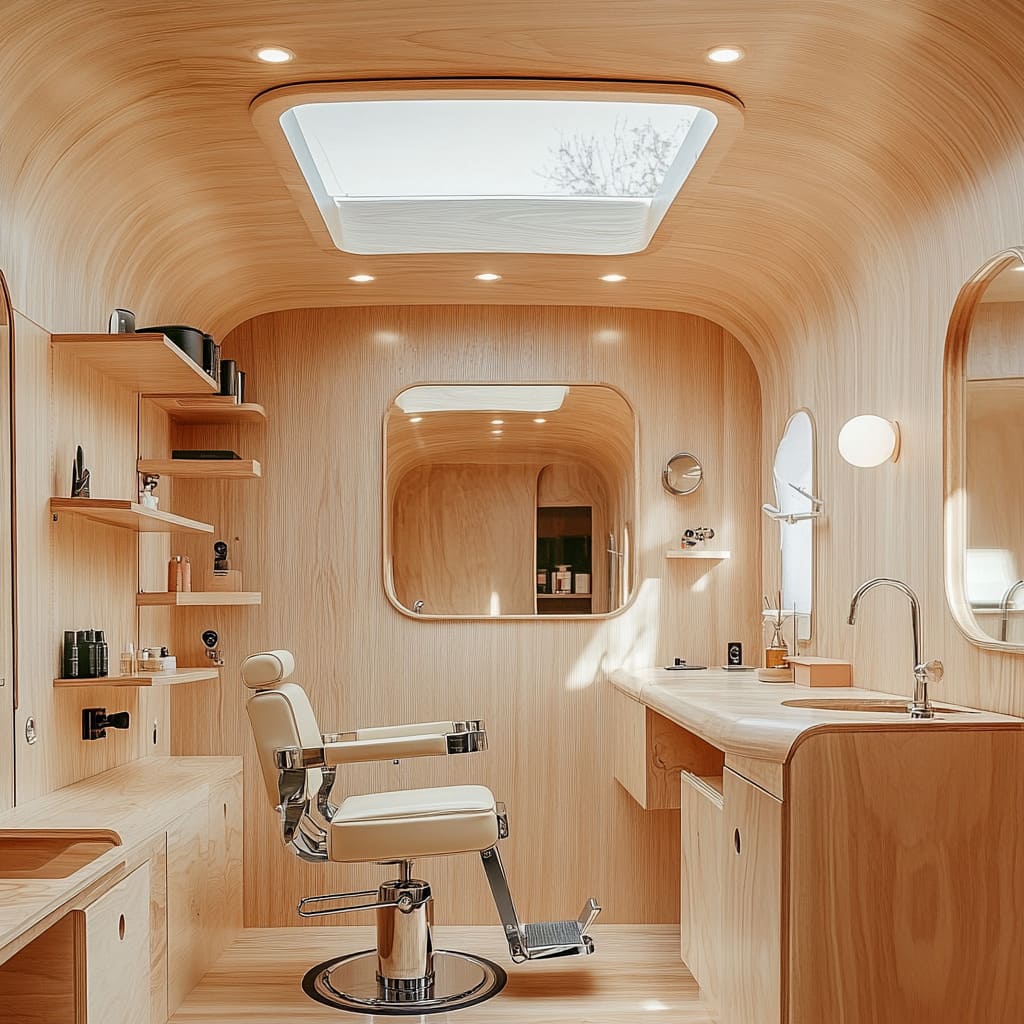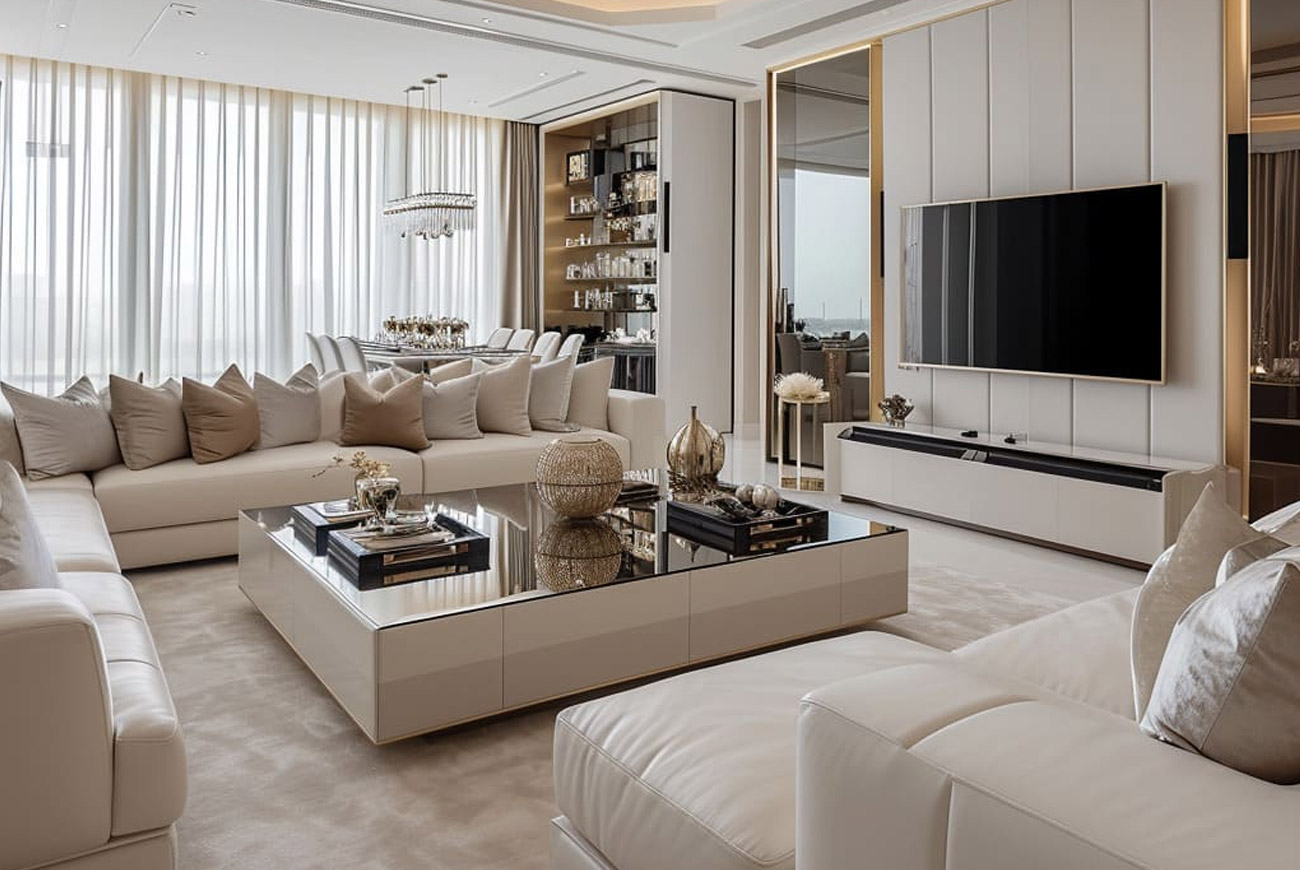
Modern luxury living has become synonymous with sophistication, elegance, and a careful balance between comfort and style. Today, more than ever, interior design plays a crucial role in transforming living spaces into reflections of personal taste and contemporary trends. This article delves deep into the key elements of modern luxury interior design, exploring how various components—ranging from furniture arrangement to lighting choices—work together to create a cohesive and visually stunning environment. Whether you’re an interior design enthusiast or looking to update your own villa interior design, this guide offers valuable insights and practical tips to help you achieve a modern, luxurious aesthetic in your home.
We will examine how to choose the right color palette, select materials, and strategically place furniture to enhance the overall ambiance of your living space. We’ll also discuss the importance of lighting and decorative elements in elevating the design of a room. By understanding these principles, you can create an interior that not only looks beautiful but also feels comfortable and welcoming.
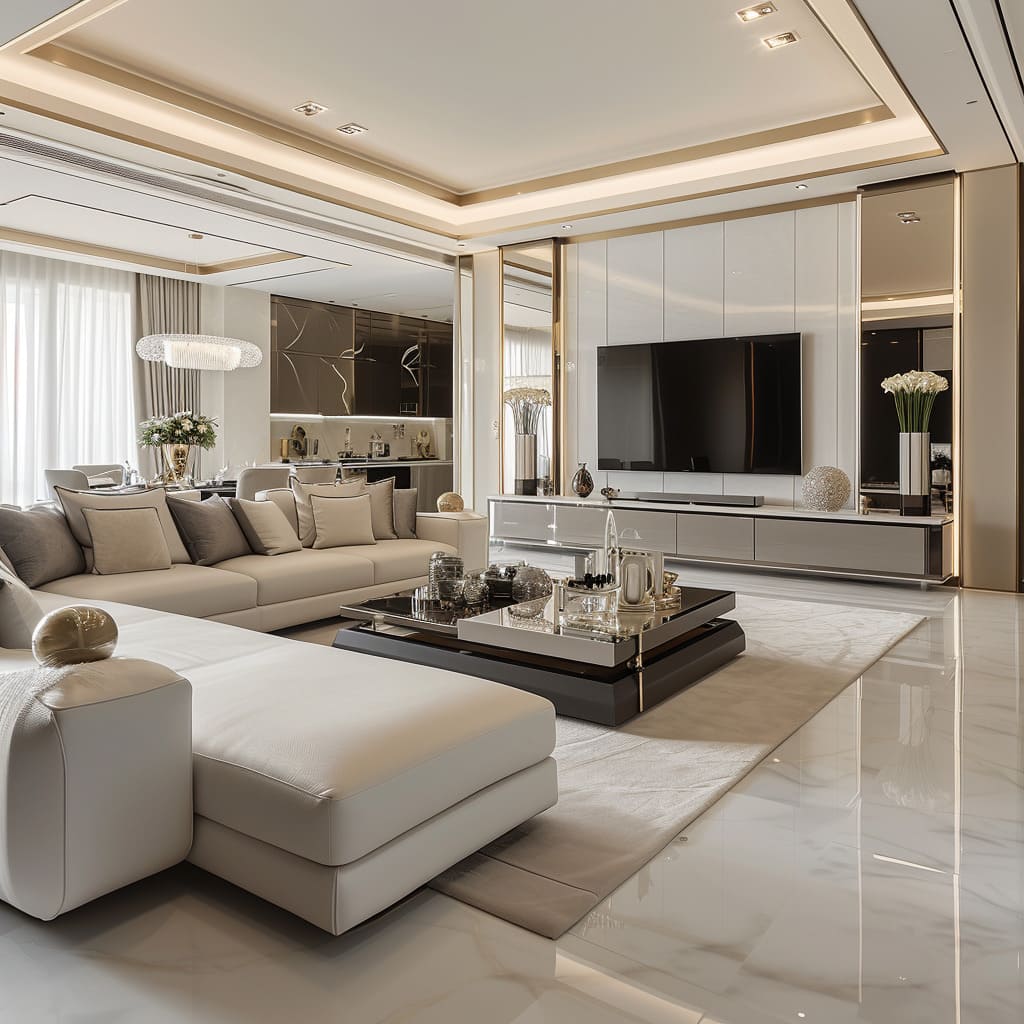
Living Room Design and Layout
Furniture Arrangement and Choices
A key aspect of modern luxury apartment interior design in Dubai is the arrangement of furniture to create a harmonious and inviting space. A large sectional sofa, for instance, can serve as the centerpiece of a living room, providing ample seating and fostering a sense of coziness. Choosing a neutral color for the sofa, such as beige or soft gray, helps to maintain a serene atmosphere while allowing the room to feel open and spacious. The arrangement of the sofa should encourage conversation and interaction, positioning it to maximize both comfort and visual appeal.
Accent pieces, such as armchairs or chaise lounges, can be strategically placed to complement the sofa and provide additional seating options. These pieces should be chosen not only for their comfort but also for their ability to enhance the room’s aesthetic. Throw pillows and blankets in coordinating colors and textures add layers of comfort and style, creating a visually appealing yet functional living space.
Coffee Table and Accessories
The coffee table often serves as a focal point in the living room, bridging the gap between functionality and style. A modern, low-profile coffee table with a reflective surface can add a touch of sophistication and glamour to the room. When selecting a coffee table, consider both its design and material; a high-gloss finish or polished metal can complement other elements in the room, such as metallic accents or mirrored surfaces.
Decorative items placed on the coffee table, such as trays, vases, and art books, should be carefully chosen to reflect personal style and add visual interest. These accessories can also serve practical purposes—trays can organize remote controls or coasters, while art books and decorative objects provide conversation starters for guests. The key is to strike a balance between aesthetics and function, ensuring the coffee table enhances the room’s overall design without cluttering the space.
Television and Media Wall
The television and media wall is another important feature in modern living rooms, combining entertainment needs with aesthetic considerations. A large flat-screen TV mounted on a sleek wall panel can create a striking focal point while blending seamlessly with the room’s design. Choosing materials like marble, wood, or high-gloss finishes for the panel can enhance the luxurious feel of the space. Below the TV, a custom-built console offers practical storage for media equipment and accessories while maintaining a clean, streamlined look.
Flanking the media wall with built-in shelves or display units provides additional storage and display space for decorative items, books, or personal collections. These shelves should be designed to complement the overall aesthetic of the room, using materials and colors that match or coordinate with other elements. Incorporating mirrored panels or polished metal frames can add depth and create an illusion of more space, making the room feel larger and more open.
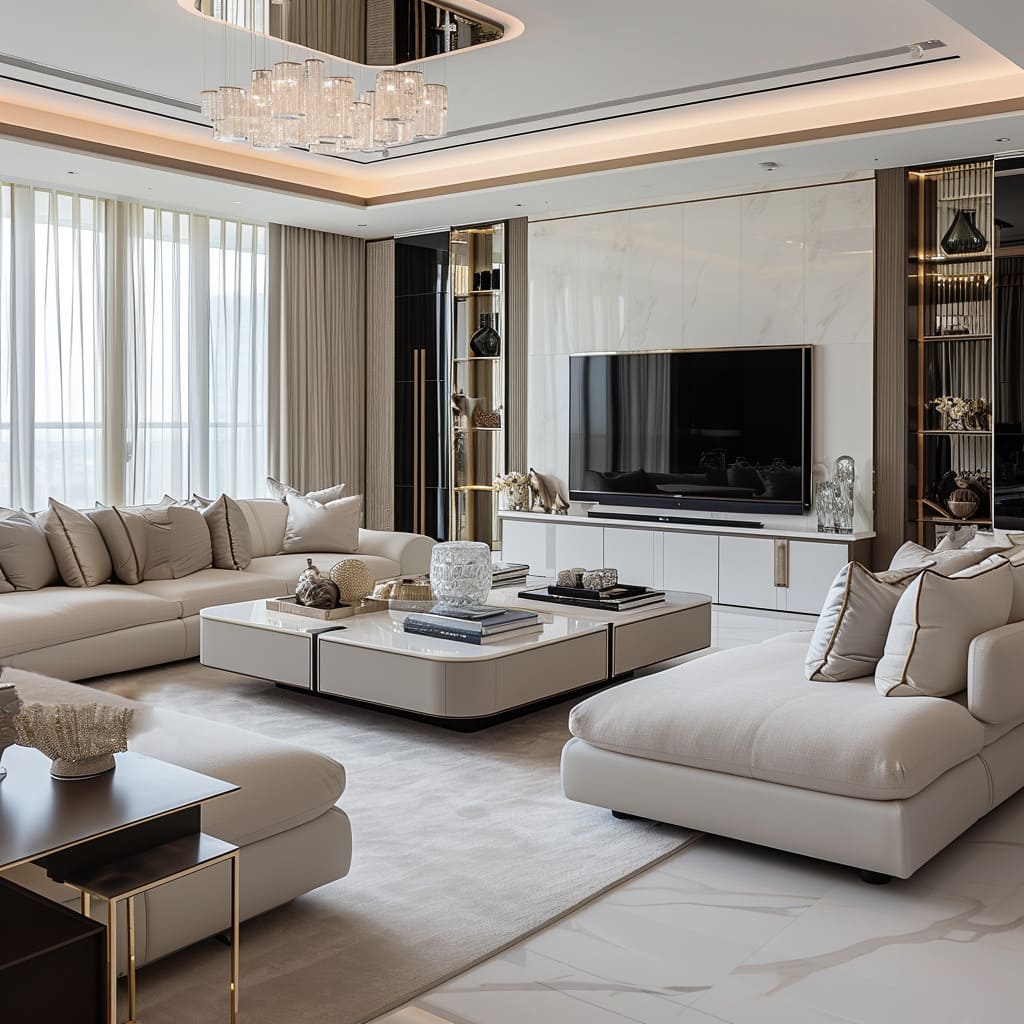
Dining Area Elegance
Dining Furniture and Materials
The dining area is a critical component of modern luxury interior design, often serving as a central gathering space for meals and socializing. A sleek, modern dining table, made from materials such as glass, wood, or metal, can anchor the space and set the tone for the area. The choice of dining chairs is equally important; upholstered chairs in a neutral color or a complementary shade provide comfort and elegance, enhancing the dining experience while contributing to the room’s overall design.
The shape and size of the dining table should be carefully considered based on the room’s dimensions and layout. A round table may work well in smaller spaces, promoting a more intimate dining experience, while a rectangular table can accommodate larger gatherings. The use of high-quality materials, such as polished wood or tempered glass, adds a sense of luxury and durability, ensuring the dining area remains both stylish and functional over time.
Statement Lighting
Lighting plays a pivotal role in defining the dining area’s ambiance and style. A statement chandelier or pendant light can serve as both a source of illumination and a decorative focal point, drawing the eye and enhancing the overall aesthetic. When choosing a lighting fixture, consider the design and materials; crystal or glass elements can add a touch of elegance and sophistication, while modern, minimalist designs in metal or wood can create a sleek, contemporary look.
The placement of the lighting fixture directly above the dining table ensures that it provides adequate light for meals while also enhancing the visual appeal of the space. Soft, diffused lighting creates a warm, inviting atmosphere, making the dining area a perfect setting for both casual meals and formal gatherings. The right lighting can transform a dining area, adding depth, warmth, and a sense of occasion.
Color Palette and Material Selection
Neutral Color Scheme
A neutral color palette is a hallmark of modern luxury interior design, creating a calming and sophisticated atmosphere that serves as the perfect backdrop for various design elements. Shades of beige, cream, and soft gray are popular choices, as they can make a space feel open and airy while allowing furniture and decor to stand out. These colors are versatile and timeless, providing a foundation that can easily be updated with new accessories or accent pieces.
The use of neutral tones also enhances the natural light in a room, making the space feel brighter and more expansive. By layering different shades and textures within the neutral palette, designers can create depth and interest without overwhelming the senses. This approach allows for a subtle yet impactful design that feels both modern and timeless.
Use of High-End Materials
Incorporating high-end materials is essential to achieving a luxurious feel in any interior design. Polished metals, high-gloss finishes, and marble or marble-like surfaces are commonly used to add a sense of sophistication and opulence. These materials not only look stunning but are also durable and long-lasting, making them ideal choices for high-traffic areas like living rooms and dining spaces.
For example, using polished metal accents—such as chrome or brushed nickel—on furniture legs, handles, or light fixtures can add a touch of glamor and refinement. Similarly, marble or stone surfaces, whether on countertops, floors, or wall panels, introduce natural beauty and elegance, creating a sense of luxury that is both understated and impressive. The key is to choose materials that complement each other and enhance the room’s overall aesthetic without creating visual clutter.
If you’re considering incorporating these luxurious materials into your own home and are curious about the costs involved, it’s helpful to review a detailed interior design price list. This can give you a better understanding of the investment required for different materials and finishes, and help you plan your budget accordingly. To explore the various options and find the best choices for your space, check out our comprehensive interior design price list. This resource provides a breakdown of costs for different elements, helping you make informed decisions to create a stunning and timeless interior.
Lighting Design and Ceiling Architecture
Ambient and Functional Lighting
Lighting is a critical element in modern interior design, playing a significant role in creating mood and enhancing the overall aesthetic. In a luxurious living space, a combination of ambient, task, and accent lighting is often used to achieve a balanced and layered lighting scheme. Recessed lighting and LED strip lights are popular choices for providing soft, diffused light that creates a warm and inviting atmosphere. These types of lighting are often strategically placed to highlight specific areas or features, such as a seating arrangement, artwork, or architectural details.
The ambient lighting provided by these fixtures helps to create a sense of warmth and comfort, making the space feel cozy and inviting. At the same time, task lighting, such as table lamps or floor lamps, provides focused light for specific activities, such as reading or working. Accent lighting, including spotlights or wall sconces, can be used to highlight architectural features or decorative elements, adding depth and visual interest to the room.
Ceiling Design Elements
The design of the ceiling is another important aspect of modern interior design, often overlooked but crucial in defining the character of a space. A coffered ceiling, for example, adds architectural interest and depth, creating a sense of grandeur and sophistication. The use of LED strip lighting around the perimeter of the ceiling can enhance this effect, casting soft, indirect light that creates a sense of depth and adds a contemporary touch.
A well-designed ceiling not only enhances the room’s visual appeal but also helps to define different areas within an open-plan layout. For example, a dropped ceiling over the dining area can create a more intimate space, while a high, vaulted ceiling in the living room adds a sense of openness and expansiveness. These design elements work together to create a cohesive and visually stunning environment that feels both luxurious and comfortable.
Decorative Elements and Accessories
Strategic Use of Decor
In modern luxury interiors, decorative elements are chosen with great care, ensuring that each piece adds value to the space without overwhelming it. The key is to select items that complement the overall design while also reflecting the homeowner’s personal style and taste. Metallic vases, crystal decor pieces, and curated art objects are popular choices for adding a touch of elegance and sophistication.
The placement of these decorative items is also crucial in creating a balanced and harmonious look. Items should be arranged to draw attention to specific areas or features, such as a coffee table, console, or bookshelf, while also creating a sense of flow and continuity. The use of decorative objects should be kept minimal, with a focus on quality over quantity, ensuring that each piece adds to the room’s overall aesthetic without creating visual clutter.
Balance Between Function and Aesthetics
Achieving a balance between function and aesthetics is a key principle in modern interior design. Every piece of furniture or decor should serve a purpose, whether it’s providing comfort, storage, or visual interest. For example, a coffee table might be chosen not only for its design but also for its functionality, offering storage space for books, magazines, or remote controls. Similarly, a decorative tray or bowl on the table can serve as both a stylish accessory and a practical place to keep small items organized.
The goal is to create a space that is not only beautiful but also practical and comfortable, ensuring that it meets the needs of everyday living. By carefully selecting and arranging furniture and decor, you can create a living environment that is both functional and visually appealing, offering the perfect blend of style and comfort.
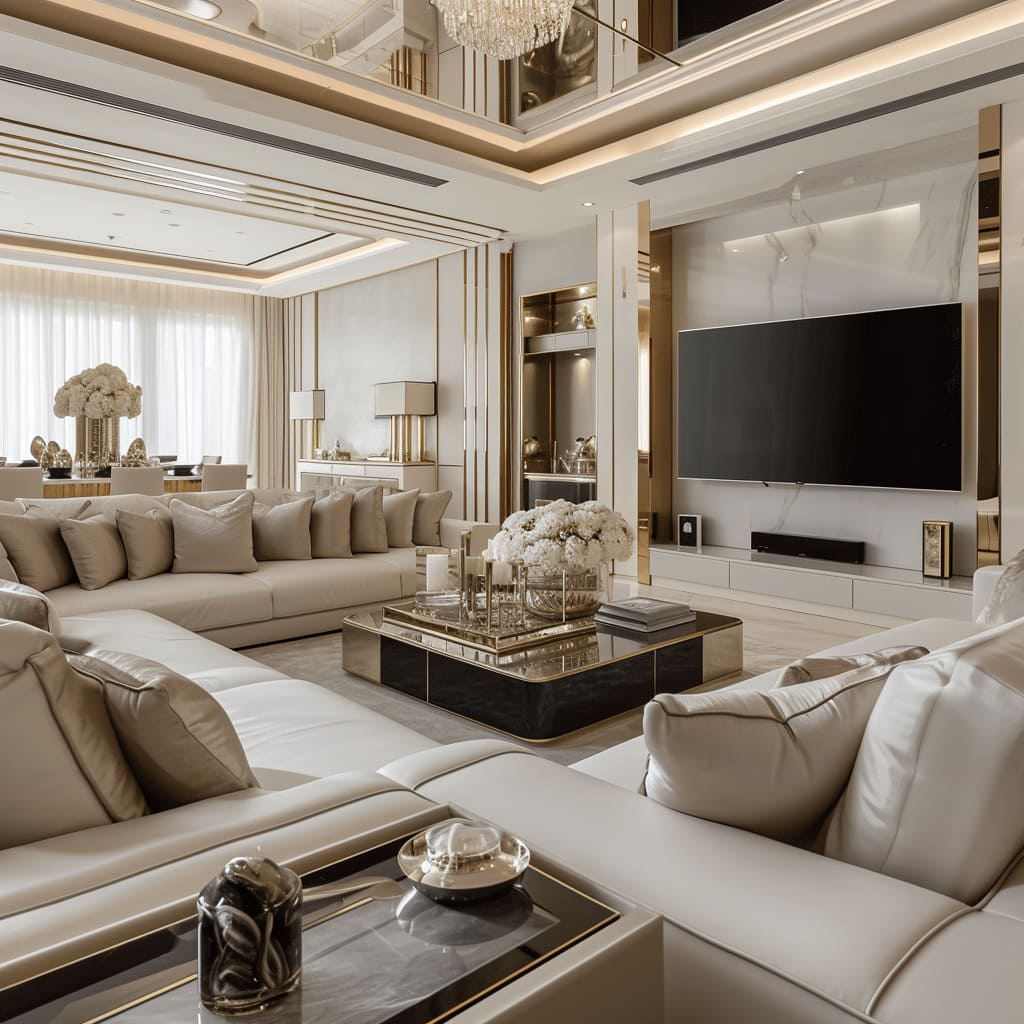
Open-Plan Living and Space Optimization
Seamless Integration of Living and Dining Areas
Open-plan living has become increasingly popular in modern interior design, offering a flexible and versatile approach to space utilization. By integrating the living and dining areas into a single, cohesive space, you can create a sense of flow and continuity that enhances the overall sense of openness and light. This approach not only maximizes the available space but also promotes a sense of unity and cohesion, making the home feel more connected and spacious.
The use of consistent materials and color schemes across the open-plan space helps to create a seamless transition between different areas, enhancing the sense of flow and connection. For example, using the same flooring material throughout the living and dining areas creates a unified look, while a consistent color palette ensures a harmonious and visually pleasing environment. This approach allows for flexibility in furniture arrangement, enabling you to create distinct areas for different activities while maintaining a cohesive overall design.
Space Utilization Techniques
Optimizing space is a key consideration in modern interior design, particularly in urban environments where square footage may be limited. The strategic placement of furniture and decor can help to define different areas within an open-plan layout, creating a sense of structure and organization. The use of mirrors and reflective surfaces, for example, can create an illusion of more space, making a room feel larger and more open.
Choosing multifunctional furniture is another effective space-saving strategy, allowing you to maximize functionality without compromising on style. A sectional sofa with built-in storage, for example, can provide additional seating and storage in one, while a dining table that doubles as a work desk offers flexibility and versatility. By carefully considering the layout and functionality of each piece, you can create a living environment that is both practical and aesthetically pleasing.
Conclusion
Modern luxury interior design is all about creating a harmonious balance between style, comfort, and functionality. By focusing on key elements such as furniture arrangement, color palette, material selection, and lighting, you can create a space that feels both luxurious and welcoming. Whether you’re looking to update your home or simply appreciate the finer points of interior design, the principles outlined in this guide offer a roadmap to achieving a modern, sophisticated aesthetic.
Remember, the key to successful interior design is not about following trends but about creating a space that reflects your personal taste and lifestyle. By carefully selecting high-quality materials, thoughtful furniture arrangements, and a cohesive color palette, you can transform any room into a beautiful, functional, and comfortable living environment.
For more inspiration and tips on modern luxury interior design, be sure to explore our residential interior design gallery.





